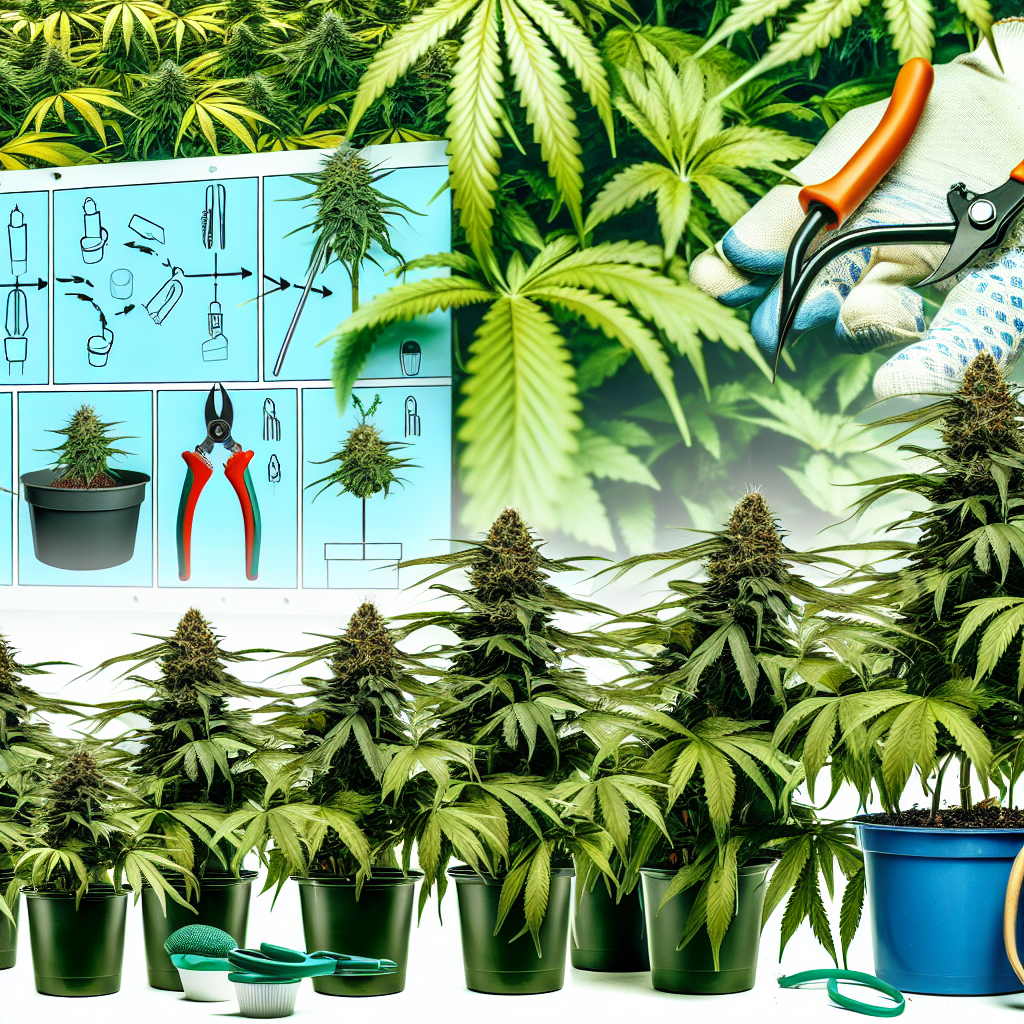Cannabis Clone Cloning: Taking Clones from Clones Successfully
Cannabis cultivation has evolved significantly in recent decades, shifting from an underground operation to a sophisticated industry driven by scientific practices and precise horticulture. One of the most critical advancements in modern cannabis propagation is cloning — a process that allows cultivators to replicate a single plant’s genotype into multiple genetically identical offspring.
Cloning provides consistency in product quality, cannabinoid profiles, and phenotypic traits, which is crucial for both recreational and medicinal cannabis markets. But what happens when you want to clone a plant that was itself a clone? Can you successfully take cuttings from a clone to create new generations?
The Science Behind Clone Cloning: Is It Really Viable?
Clone cloning — taking cuttings from clone-grown mother plants — is a common, industry-standard practice among professional growers. Though the concept may raise concerns about genetic degradation or mutation over time, decades of practical experience and a growing body of scientific evidence suggest that cannabis clones can be successfully propagated over many generations with minimal degradation when done correctly.
This approach allows growers to preserve and scale valuable genetics, such as rare terpene profiles, specific THC/CBD ratios, and traits like pest and mold resistance. It’s especially vital in commercial operations, where consistency and repeatability are critical to success.
While the cannabis community has long speculated about “genetic drift,” recent studies indicate that these concerns may often stem from environmental factors or poor maintenance — not from the cloning process itself.
Dispelling the Myth of Genetic Drift in Cannabis
One of the most persistent myths in cannabis cultivation is the fear that repeated cloning will lead to “genetic drift” — a perceived loss of potency, vigor, or desired traits over time. However, research and expert cultivation experience tell a different story.
In reality, what’s being observed in these cases is typically the result of:
– Environmental stress
– Inconsistent growing practices
– Incorrect feeding schedules
– Pathogen exposure
Scientifically, what many growers refer to as “genetic drift” may actually be epigenetic changes — shifts in how genes are expressed due to external conditions, rather than permanent changes to the DNA itself. And here’s the good news: epigenetic changes can often be reversed or minimized when clones are grown in optimized, stable environments.
Scientific Studies Confirm Clone Cloning Success
Several academic and industry studies provide solid backing for the viability of clone cloning in cannabis.
– A foundational study on vegetative propagation revealed that asexual reproduction, which includes cloning, preserves DNA fidelity exceptionally well in herbaceous plants like cannabis ([National Library of Medicine](https://www.ncbi.nlm.nih.gov/pmc/articles/PMC8199544/)).
– A 2020 article in *Frontiers in Plant Science* concluded that cannabis cuttings taken from clone-grown mothers showed no notable genetic mutations even after four successive generations when proper protocols were followed ([Frontiers](https://www.frontiersin.org/articles/10.3389/fpls.2020.01096/full)).
The study’s findings echo what seasoned growers have known for years: your favorite high-yield, pest-resistant, terpene-rich phenotype can live on — generation after generation — without losing its edge.
How to Prevent Somaclonal and Epigenetic Variation
While somaclonal variation – random mutations due to prolonged stress or age – can occur, these instances are rare. Most problems during clone cloning arise from poor techniques or environmental mismanagement, not from the cloning process itself.
To ensure the longevity and health of your clone lines, follow these best practices:
– Keep a consistent temperature and humidity across generations
– Use sterile tools and workspaces
– Monitor and balance feeding schedules regularly
– Maintain disease- and pest-free environments
– Limit the number of generations by starting a new mother plant from a younger clone on a regular schedule
Epigenetic drift, unlike genetic mutations, is tied to growing conditions and can be reversed. In fact, optimized environments have been shown to stabilize gene expression even across multiple clone generations ([Oxford Academic](https://academic.oup.com/jxb/article/69/3/527/4604296)).
Tissue Culture and Technology: The Future of Clone Purity
A growing number of cultivators are turning to tissue culture cloning — an advanced method for regenerating genetically pure plants in a sterile lab environment. This technique refreshes the plant’s cellular age and removes accumulated pathogens or stress memory, essentially offering a “reset” button for clone lines.
While more technically demanding and resource-intensive, tissue culture validates the concept that clone cloning doesn’t inherently cause degeneration. Instead, it reaffirms that proper technique and environment are key to success.
Moreover, software tools and data analytics now enable cultivators to track clone lineage, monitor growth metrics, and prevent phenotypic drift across crop cycles. The fusion of traditional plant science with cutting-edge tech reinforces the long-term viability of clone cloning in cannabis.
Conclusion: Clone Cloning is Here to Stay
Cloning from clones is not only possible but also a foundational tactic within commercial and professional cannabis cultivation. When maintained with care, consistency, and precision, clone lines can remain stable, powerful, and productive over many generations.
The age-old myth of inevitable genetic breakdown is being dismantled by modern science and proven best practices. Whether you’re preserving rare genetics, scaling high-value strains, or simply maximizing production efficiency, clone cloning offers a dependable pathway forward.
As the cannabis sector matures, clone cloning remains a pivotal piece of the puzzle — sustaining genetic integrity, ensuring product uniformity, and empowering cultivators to meet both regulatory and consumer demands.
References
– National Library of Medicine: [Vegetative Propagation and DNA Fidelity](https://www.ncbi.nlm.nih.gov/pmc/articles/PMC8199544/)
– Frontiers in Plant Science: [Somatic Maintenance in Cannabis sativa](https://www.frontiersin.org/articles/10.3389/fpls.2020.01096/full)
– Oxford Academic: [Epigenetic Influence in Plant Development](https://academic.oup.com/jxb/article/69/3/527/4604296)
– Cannabis Business Times: [Maintaining Genetic Integrity in Cannabis Clones](https://www.cannabisbusinesstimes.com/article/maintaining-genetic-integrity-in-cannabis-clones/)
– AgriTech Tomorrow: [Tissue Culture in Cannabis Propagation](https://www.agritechtomorrow.com/article/2019/09/how-tissue-culture-can-ensure-genetic-cleanliness/11844)
Summary:
Cannabis cultivators can successfully clone clones, preserving valuable genetics and traits across multiple generations. While concerns around “genetic drift” persist, research shows that proper techniques and environmental controls can maintain clone stability. Advanced methods like tissue culture further validate the long-term viability of clone cloning in the cannabis industry.




